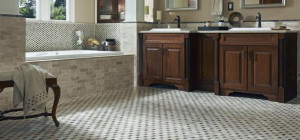 As with everything in life there is a right way and a wrong way to approach home improvement. You should begin by asking yourself, “why am I looking to make improvements”. This is because some things you can do will add serious comfort points, but will not necessarily add value to your property and vice versa.
As with everything in life there is a right way and a wrong way to approach home improvement. You should begin by asking yourself, “why am I looking to make improvements”. This is because some things you can do will add serious comfort points, but will not necessarily add value to your property and vice versa.
Here is our top five list of the biggest don’ts when renovating or making improvements to your humble abode.
- Don’t Assume Value
Not all improvements you can make will add value to your home and many projects won’t even add the amount you may spend on the project to the final home sale. Home improvements are generally done for one of four reasons:
- To improve comfort
- To add value
- To maintain the integrity of the home
- To personalize to the taste and requirements of the home owner.
Don’t assume that just because you find the changes appealing that they will be friendly to a buyers market. Making small upgrades to your facades & cladding can be a cheap, effective upgrade that adds value. Whereas knocking down a wall and making two smaller bedrooms into one larger bedroom will certainly make the occupant more comfortable, but can significantly reduce resale value.
- Add Value Not Maintenance
If you intend to make improvements for the sake of resale value, you need to ensure that the changes you make will not need too much maintenance. If you are working on the garden for example, add plants that will not need too much attention to stay healthy and tidy.
If the potential new owners are already tallying up the amount of upkeep a home requires, then they aren’t exactly falling in love. If there are things that you are changing try to make them things that are very ‘safe’ or at least easy to change back, should the new owner want to take that route.
- Cutting Corners Via Cost
There is rarely any need to go for the top of the line products at every turn.
It is, however, vital to ensure you are using the correct materials for the job, completing all stages to the health and safety codes of your region and taking the time to ensure that the work you are doing is quality.
Another way people cut costs is by DIYing.
However, unless you are experienced or extremely thorough, your work may be noticeable to people coming to inspect for purchase. If you are staying in your home then there is no reason not to tackle some projects yourself. With that said, if you find yourself out of depth or are making improvements to add a few extra numerals to the price tag to your home, it might just be best to go with a contractor.
- Not considering Location
One mistake that is easy to overlook is the fact that, depending on the location of your property, the value can only go so high. In any given area there is an average range in the price that homes of your size will go for. So it is important to keep in mind that if the higher end properties in your area are selling for $700,000 you can not expect that any amount of improvements will take you much higher than that amount. So only perform repairs that will bring it up to, but not over, that threshold.
- Over-Personalizing
Finally, the most common mistake when improving and staging a home for sale is simply make it too niche. If the colours, furniture, fixtures, textures or decore are too specific to taste then prospective buyers may be turned off. Either because there is too much work to be done to change things or because they can’t imagine themselves in the home.
So to avoid these fatal flaws, be aware of your intent for improvements.
Always weigh up the costs and benefits of what you are looking to do and be aware of the realities of the market, follow these rules and you will always be satisfied with the outcome!







